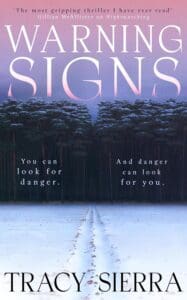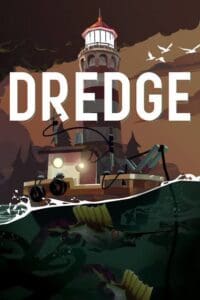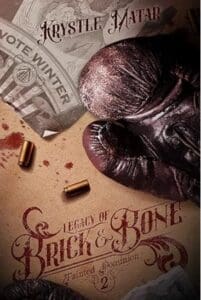
Synopsis
The pact is bleeding.
What started as a bountiful covenant between a Republic and the goddess who sustains it now suffers a drought of faith. Should a famine of devotees follow, the Blood Mother will uproot the pact. Civilisation will collapse.
In the midst of these uncertain times, Corbha, a warrior-nun of steadfast faith, eagerly awaits her brother’s birth. He will be the first child born at Madhcha Abbey in twenty-four years. If his delivery suggests divine favour, Corbha and her siblings are to punish a trio of disobedient senators. They have propagated the Republic’s growing disregard for the Blood Mother and Her Eightfold Orchard. That cannot stand.
For Einaid, a doomsday cultist in hiding, the child’s birth raises questions about the abbey and its inhabitants. The answers are scandalous enough to spark widespread dissent should they fall into the wrong hands—and nothing would please Einaid more than igniting the flame that makes Her Orchard burn.
Fall, Sacred Apple is a tragic dark fantasy drama washed in insidious and eldritch botanical horror.
Quick Review
A tragedy that punches well above its weight, Fall, Sacred Apple introduces us to a world teeming with possibilities, unrest—and promises more to come.
Full Review
I’m proud to have beta read an earlier version of this book, which I then read again after Emory Glass provided me with a digital advanced reader copy.
I fell out of love with reading for a few years when I was in high school. The book that got me hooked again was Devil’s Keep by Phillip Finch, a military thriller novel. The thing that I remember most about it was how the book was structured around a countdown. Certain chapters were preceded by an ominous “Harvest Day -10.” “Harvest Day -9.” And so on. Devil’s Keep is counting down to something, but we don’t know what it is until about halfway through. Then it’s a race against time.
I thought about Devil’s Keep a lot while reading Glass’ Fall, Sacred Apple. They are two extremely different books: one is a contemporary military thriller and the other a dark fantasy steeped in religion. Fall doesn’t even have any humans (more on that shortly), but the books share a similar structure. From the moment we enter Madhcha Abbey, something foul is afoot, but it takes some time to put all of the pieces together.
In Fall, Sacred Apple, we follow two women at the Abbey. Corbha is the youngest sanguiren—a kind of religious vampire—and the Abbey’s sacrest mentee. Einaid is a Widow—the mother to a sanguiren child—who is residing at the Abbey.
Corbha’s story begins as a kind of slice-of-life tale. She’s simply going about her days at the Abbey, helping her brothers and sisters, praying to the Blood Mother, and generally trying to prove herself. She is, after all, the youngest person living there, and seeks more responsibility. She begins to get what she wants after a child is born, the first child at the Abbey in over twenty years.
Einaid, however, is an agent of the Bloodflower-Lying-Dormant, a separate deity who is conspiring against the Blood Mother. Einaid has infiltrated the Abbey, gained their trust, and seeks to reveal a scandalous truth that might be its downfall. However, her loyalties are tested when the Abbey comes to her aid after a traumatic attack. Additionally, Einaid is a wet nurse, and spends a great deal of time with the Abbey’s new baby—who she begins to care for as her own.
As you can probably tell, things get complicated quickly in Fall, Sacred Apple. Glass’ worldbuilding is dense. One of the most striking aspects are the people, who are all non-human. Instead, the story is populated by ren. Think of them as blue-skinned feline elves, and you’re not far off.
The religions involved in the story, which everything revolves around, are also not too different. I had a little trouble tracking the Blood Mother and Bloodflower and Children of the Bloodflower and the Sanguire of the Sacred Apple… It does all become a bit muddy. A great deal of this is also based on historical events and religions, and Glass isn’t afraid of using archaic terms to describe things. This lends the world a greater sense of realism, but can make some lines a bit challenging at times.
However, once you get used to the setting, it begins to feel lived-in and complex. I could tell that Fall only scratches the surface of what Glass has created here, and there is so much more to this world than what we can see through the Abbey. We do get hints of that greater world here and there, but this book keeps a tight focus on the Abbey and the struggles that take place within it—which is probably a good thing, since I expect this will be most people’s first time with Glass’ Chroma Books.
And for those who need help keeping track of everything, Glass has included a Dramatas Personae, Glossary, and even included a calendar. So, although the story can become quite dense, you can usually find the answers you need.
As you might imagine, Corbha and Einaid’s stories intertwine around the Abbey and the new baby. They reach a sanderlanche-style tipping point as they fight to help or hinder the Abbey, however, I’d bet that it’s not quite what you’re expecting. Fall, Sacred Apple feels like a prologue for another story. It is an introduction to these characters and the tragedy that explains how Corbha and Einaid wind up… wherever the next one takes them. I have an idea about that, but I’ll let you discover it for yourselves. At about 280 pages, this is a taste of Glass’ vast and intricately-made world, which it seems we’ll see more of soon. I for one, am excited to see what comes next.










Leave a Reply